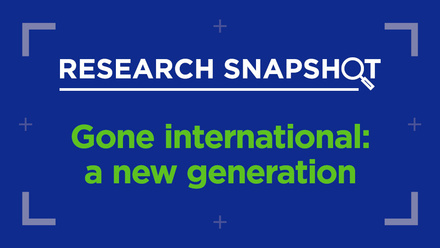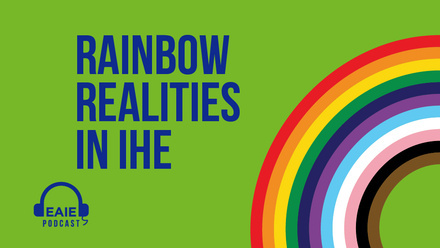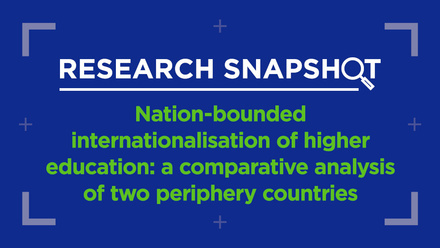Walking the talk in inclusion and diversity

Nowadays, almost every higher education institution has seized upon the opportunity to include the terms ‘diversity, equity and inclusion’ into its vocabulary. ‘Access’ and ‘belonging’ are interconnected concepts and are slowly being introduced as well.
All these terms are important and are rightfully coming to prominence in higher education. However, each of them is complex and inextricably linked to political and social struggles, to power relations, discrimination and forms of oppression. Thus, they cannot be merely used as buzzwords, neither discussed lightly, nor be enacted through superficial and tokenistic actions. They call for conversations and encounters that open up genuine dialogues; they challenge existing hierarchies; and their realisation demands substantive systemic changes.
We cannot ‘walk the talk’ without taking sincere actions
Put differently, we cannot ‘walk the talk’ without taking sincere actions. In the case of the academy its very own transformation is a necessity. Diversity, equity, inclusion, access, and belonging require policies and practices that are centred around the well-being of all communities, foregrounding the promotion of social and organisational solidarity, in order to build an academy where all its members can flourish, while shifting away from solely formal numerical and tokenistic representations.
Adopting an intersectional approach
Against this background, our approach must be an intersectional one, meaning that we have to scrutinise the power relationships within the higher education landscape, like identifying Reforming the university: divesting Eurocentrism in knowledge production, investigating which groups of students are the most likely to afford a study abroad programme, and being mindful of hiring habits on an institutional level, just to mention a few examples. In doing so, we will acknowledge that there are voices which have been excluded, are marginalised, and not heard. This exclusion will be visible on multiple levels such as in our syllabi, citational habits, hiring policies, the composition of the faculty, the leadership level and in decision-making processes.
Further and hopefully, it will also make us realise that categories such as ‘woman’ or ‘(international) student’ are not homogeneous ones and that factors such as socio-economic background, physical and mental ability, race, ethnicity, religion, immigration status, sexual orientation, gender identity, location etc (the list is long) and their intersections create very different realities for different people. In other words, an intersectional approach identifies systemic barriers and allows us to implement policies and laws in educational and organisational policies that aim at fostering intersectional justice.
Creating an inclusive and diverse environment
In view of this, we ought to think about diversity, equity, inclusion, access and belonging as overarching concepts that concern everyone within the academy, meaning that they can neither be solely reduced to the tasks of the international office nor outsourced to your DEI officer (if your institution is lucky enough to have one).
As Maya Angelou says: "Do the best you can until you know better. Then when you know better, do better."
If we are genuine about our approach towards creating an inclusive and diverse environment where everyone feels that they belong, and where equity and access are significant goals to achieve, the assessment of the following topics and their consequential questions could be a good starting point:
1. Review your recruitment policies and ask yourself: Whom am I hiring and why? How diverse is my team and who occupies leadership positions? Am I practising tokenism? Are my HR policies written in inclusive language?
2. Review your staff trainings: Have you implemented policies for all staff to attend trainings on diversity, equity, inclusion, access and belonging? Have you allocated resources towards achieving intersectional justice within your academy, recognising that this is a long-term commitment?
3. Review your syllabus: How diverse and inclusive is your syllabus? Are you referencing women, Black and Indigenous intellectuals, scholars of colour, academics from the Global South, disabled scholars?
4. Dedicate time to learn about excluded and marginalised communities: Are you expecting members of marginalised communities to be your educators? Who are the people you spend your time with at work and outside of it? What are you reading?
5. Interrogate the role of academia as one of a few places left where critical debates are still happening: Do you think that the academy is disconnected from activism and political developments? Do you consider the higher education landscape as a space that fosters solidarity, critical thinking, community and positive change?
6. Spend time with the concepts of diversity, equity, inclusion, access and belonging: How are they used within your institution? Are they followed up by actions or are they merely buzzwords associated with marketing strategies? Do BIPOC, LGBTQI+ and disabled communities occupy space within your institution and are their voices amplified, or are they only talked about?
As a result, the above exercise will change you, you won’t be able to unsee certain things anymore, and you will start becoming accountable towards the realities that create discrimination, inequity, exclusion and oppression. And then you will act towards diversity, equity, inclusion, access and belonging, because as Maya Angelou says: "Do the best you can until you know better. Then when you know better, do better." And we can all do better.






